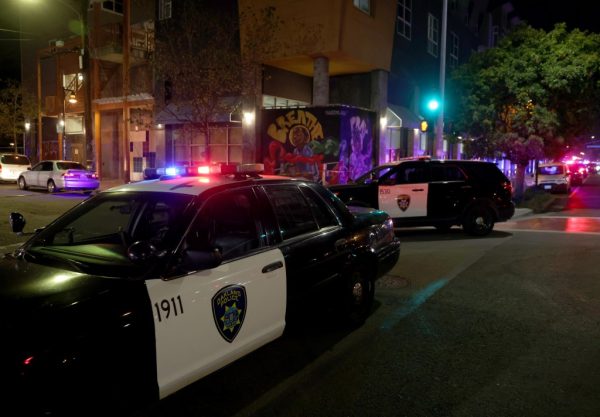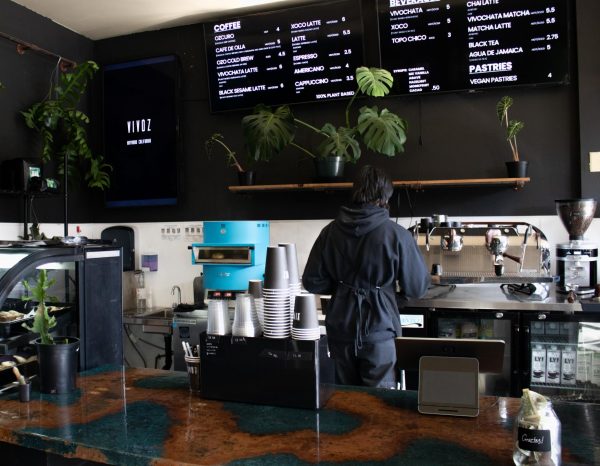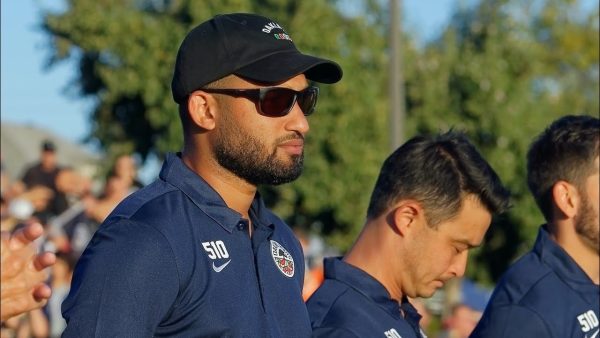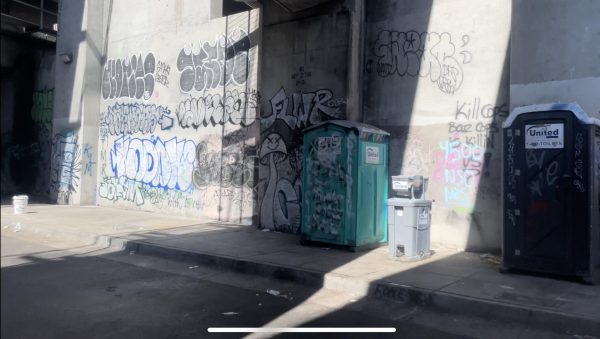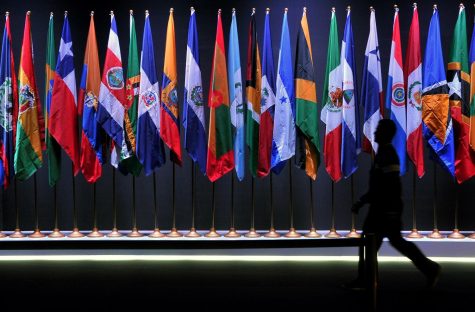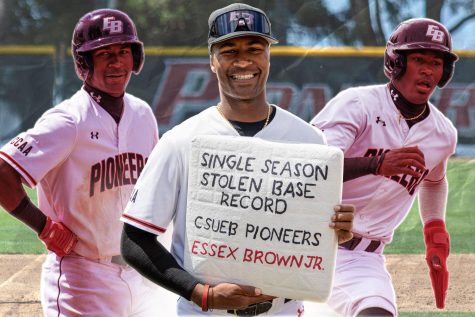The Battle For Okinawa
Ailing Cheng, Contributor
June 18, 2020
Okinawa is a small, beautiful with lush greenery and beaches, and an island filled with so much history. On the outside, it may seem beautiful to the eye, but internally its history is dark and tragic.
All the way back to 1609 and the invasion of the Satsuma only foreshadowed the long history of occupation that Okinawa would face. Today, Okinawa is a prefecture of Japan with an island filled with U.S. military bases that represent residents’ ongoing struggle for self-determination. Since Okinawa hosts the majority of the bases, it has led to opposition to the occupation. The result of military bases has led to a string of incidents from sexual assault to dangerous airspace landing.
As a small island, Okinawa was once an independent country that was ruled by the Ryukyu Kingdom and had a flourishing trade economy with China and other neighboring countries. In 1609, Okinawa was invaded by the Satsuma. At this time the Ming dynasty was in decline due to internal and external issues and low finances. The invasion changed the geopolitical structure and led Japan to rise and the Ming Dynasty to eventually fall.
From the invasion of the Satsuma in Okinawa’s history, we progress to World War II. During this time, the Battle of Okinawa was a major war that many are unaware of. In this battle, more than 112,000 people died in total; the majority were the Japanese and Okinawan. Although this occurred 75 years ago, for some it still feels as it did all those years ago.
The Battle of Okinawa was one of the bloodiest in history. It is barely covered in our textbooks, acknowledged in our classrooms, and at times censored by the Japanese media. Men, women, and children were all victims of this vicious battle. Families were separated and lost to starvation, disease, and at times suicide. The war pushed Okinawans to seek shelter in caves or to escape the island all together to avoid the crossfire.
Yamauchi Tokusin, an Okinawa native-born during 1935, recalls the time the Americans landed and started bombing the island. During Toksuin’s lifetime, he witnessed the bombs being dropped on the island and the people.
“My father told my mother and my siblings to flee to the mountains before the landings. My mother was afraid of going to the mountains with small children.”
It is still questioned as to why the battle occurred and the politics behind it. The National Interest, a media sector of The Center for the National Interest which promotes, American foreign policy, discusses the Battle of Okinawa, which was the last major battle of WWII. The American naval forces came and were larger than those in Normandy. The importance of the battle was not the atomic bombs launched later. At the time President Truman was adamant at ending WWII with limited casualties. The bloodbath of the battle only further pushed Truman to lead to bombing Hiroshima and Nagasaki. The Truman administration determined that the casualty numbers from the Battle of Okinawa were to reach one million deaths.
This projection was assessed for the invasion of Japan. US leaders at the time determined that was too high a cost, and launching an atomic bomb was the best course of action. Okinawa was the key to invading Japan and controlling Iwo Jima and surrounding pacific islands. The end result was air space control and the ability to cut Japan off from supplies, provide the US access to islands, and create refuel and repair stations.
The result of the battle, years later, is that Okinawa has gone from being controlled by the United States to the U.S. military occupying and building on the island even though the U.S. no longer controls Okinawa. This has led Okinawans to protest and advocate against the U.S. bases and the construction of the latest relocation base at Henoko.
Riku Tokashiki is a young Okinawa native who has grown up with the presence of the U.S. military his whole life. He is one of a few from the younger generation, who are invested in the anti-base/U.S. military movement.
“I think what I wish the world knew about our history, is our social problems with the U.S. military bases. If we got more awareness from the world we could stop or make an impact with the government.”
No one was exempt from either fighting in the war or treating the injured. Young school children became nurses to injured soldiers and were left treating many in caves in unsanitary conditions. At times, fighting in the war was not the only thing that killed many Okinawans. It was the lack of food and sanitary resources that hurt the population. Many ran to the caves on the beach to avoid the crossfire.
“It’s a miracle how we all survived.”
Yamauchi Tokusin’s immediate family survived the bombing, but two of his cousins were not as fortunate. Citizens that choose to seek refuge in the mountains were more likely to survive. During the course of the battle, many families were separated or lost to the brutality of the war.
Conditions were so awful many starved, died due to infection and infestation of maggots. At times, bodies would lie all over the battlefield to rot or die. Soldiers were chained to posts and forced to die in place. As the war progressed and the number of casualties increased the water was becoming contaminated from decomposition. For 27 years, Okinawa was under the United States’ rule, from the beginning of the great battle until 1972, under the Nixon administration.
Professor Brad Williams, from the University of Hong Kong, specializes in Japanese politics and discusses the political climate of Okinawa. In his published article, Militarising Japan’s Southwest Islands: Subnational involvement and insecurities in the Maritime Frontier Zone. Okinawa was reverted back as a prefecture of Japan in 1972, however, the US military bases remained. One statistic that William cites is, Okinawa hosts approximately one-quarter of the main island occupied by US military bases. In short, history has not been kind to the people and the island of Okinawa.
The U.S. military has been responsible for a number of accidents and betrayals that have left their mark on the people of Okinawa. In 1995, two officers from the U.S. Marines kidnapped and sexually assaulted a 12-year-old Okinawan girl walking home. In 2004, The Japan Times reported, a U.S. helicopter crashed onto the Okinawa International University. These are one of many incidents that have occurred due to the presence of the US military.
These incidents over the years have only increased and backed activists’ reasons for protesting the bases on the island. Since the battle 75 years ago, many citizens are still fighting tirelessly to win what is for them a never-ending conflict. Okinawans are fighting for peace and the removal of US military bases from the island.
The major fight is Henoko, the new relocation base for Futenma, the Marine Corps Air Station. According to the Center for Biological Diversity, an activist organization for the environment. The construction of the base has led to pollution to land and sea life. The dugong, one of Okinawa’s most endangered mammals, would be extinct if the construction of the base continues.
In an interview in 2003, Secretary defense Donald Rumsfeld declared Futenma to be “the most dangerous base in the world.” The former secretary of state was surprised to see an airstrip in the middle of an overpopulated city. The location of Futenma was and still is a direct violation of safety standards for military airfields for the U.S. Department of the Navy, following the Federal Aviation Administration (FAA) standards. Airstrips according to the Department of the Navy directive OPNAVINST 11010.36c stated that clear zones beyond ends of runways and flights past have a higher risk of air accidents and should be undeveloped.
For many reasons, including the location of Futenma, the U.S. relocation base Henoko was the solution based on the Japan-U.S. agreement. Specifically, in the guidelines, Japan provides bases and financial and material support to the U.S. deployed forces that are deemed essential in maintaining the region. Okinawa being a prefecture must bear the burden of this agreement. Even though many citizens have opposed Henoko, especially Okinawa Gov. Denny Tamaki, the prefecture has still continued with the construction.
Due to citizens’ opposition to the construction of Henoko, the prefecture has experienced delays in construction due to protestors’ efforts. However, the fight is far from over for the people of Okinawa. For many years, protestors have tirelessly made the effort to protest the construction of the base and bases throughout the island. But, more recognition is needed for the people of Okinawa. Local efforts have only gone so far with little change.
“I don’t think the protesters’ work is doing well,” Riku Tokashiki, a young student activist from the Okinawa International University. “For now the number of protestors is very small. We need to spread more awareness to the world, with voices from all over the world. If we could do that we could stop it or at least have an impact on the government.”
Tokashiki, like many other activists, has done all they can to make a difference. It is for this reason that more awareness should be brought to Okinawa and other countries around the world. Especially, to those who may not have the power and resources to reach the rest of the world.





